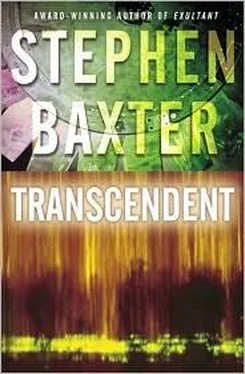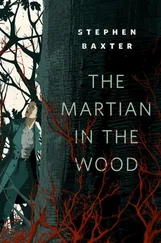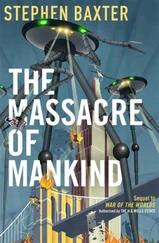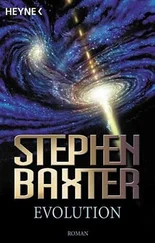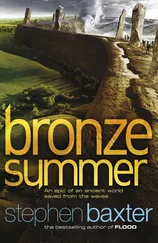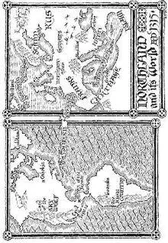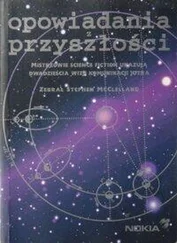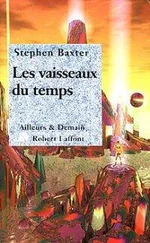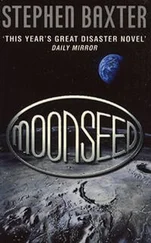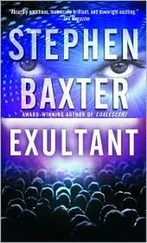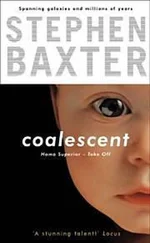She walked him all the way to one of those mud-covered teepeelike buildings, and helped him through the low doorway with its leathery flap. Inside, a dirt floor was covered by rugs of some kind of animal skin, very old and worn with use. There were three grass-stuffed pallets, and a stack of cooking pots. The only significant piece of furniture was a big old trunk, firmly padlocked: the family treasure of a nomadic people. My systems brought me a stink of stale cooking fat.
There was one occupant, a local, a boy in a cut-down military-looking parka jacket. Aged maybe twelve, thirteen, he was forking his way through an open tin of baby carrots. When we came in — injured Tom with his oxygen mask, Sonia in her space suit, and me, a VR ghost — the kid, wide-eyed, tried to push past Sonia and run. Tom spoke to the kid softly. The kid answered before running out, though not without another spooked stare at Sonia and me.
Tom eased his way painfully down onto one of the pallets. He clutched his chest as if it hurt. Somewhat to my surprise, Sonia settled down on a pallet near Tom.
I asked, “You two know each other?”
“Not before the burp,” Tom said.
Sonia said, “It’s advisable for Tom to have some protection. Some of the locals take it out on the Westerners. Even aid workers like Tom.”
“Well, you can understand it,” Tom said. He wheezed slightly, as if he’d suddenly turned into a turn-of-the-century heavy smoker; it was a lung rattle you didn’t hear anymore. “The locals have a difficult time of it, Dad. Even before the Warming the industries in the area made a mess of everything. You must have seen the plant a couple of klicks away. Even in the last century you had oil spills, the rivers killed by waste, the ground melting around the factories—”
I wanted to scream at him. “Just for once,” I said, “can’t we talk about you and not the state of the damn planet?”
Tom stiffened. “It’s why I’m here in the first place.”
Sonia Dameyer just watched this exchange, an amused expression on her face.
I backed up and tried again. “Just tell me what happened.”
He took a deep, rattling breath. “I just got a lungful of gas.”
“Gas? Poison gas, nerve gas? What are we talking about here?”
“Dad, take it easy—”
“Not an artificial agent,” Sonia said quickly. “You don’t have to worry about that, Mr. Poole. It wasn’t terrorism, not intentional. The event was natural. The gas was mostly methane laced with carbon dioxide.” She raised her eyebrow at Tom. “But your son got rather more than a lungful. He wouldn’t have got that if he hadn’t gone running into the worst of it to pull the children out.”
So this was his heroism. Tom looked away, embarrassed even by this laconic description, suddenly very childlike.
“Who was that kid?”
“His name is Yuri. He’s in one of my classes, Dad. His parents are, were, putting me up.”
“I didn’t know you spoke Russian.”
He rolled his eyes; Sonia kept a neutral expression. Tom said, “Dad, neither does Yuri. That wasn’t Russian. This is a big country. Most of my students here are locals. Well, it is their ecosystem.”
I said, “Ecosystem? You’re teaching them ecology?”
“Teaching them to save it. It’s a crash program, Dad,” he said. “The ecosystem in this place is falling apart. The permafrost is melting.”
In this place, on the northern edge of the world, the deep soil had never thawed out since the Ice Age: there had been a great cap of permafrost, in some places more than a kilometer thick, and the thin skim of soil on top of the permafrost had been the basis of an ecology — always impoverished, but unique. You had lichen and fast-growing grasses and herbs, and trees that could never grow tall because their roots couldn’t dig into the frozen ground, and so on. There was a unique community of birds and animals here, gulls and lemmings and foxes; there had been reindeer that fed on the lichen, and humans that followed the reindeer herds.
“And now,” I guessed, “it’s all dying back.” The usual story.
“The permafrost is thawing,” he said. “Dad, you’re an engineer; you can imagine the consequences. It’s as if the bedrock is melting.”
I thought of the buildings sinking into the ground, the pits in the landscape. Maybe the rapid coastal erosion was a consequence, too, I mused, if the permafrost had actually been holding the dry land together.
“Even the lichen is dying off,” Tom said. “Without lichen, no reindeer, and without them the people are screwed. Even fifty years ago they were still hunter-gatherers. But now — you must have seen how old the skins they use are, reused and scraped until they are paper-thin, and then used again. And even the land is crumbling away from under their feet.”
I had switched off long ago from thinking about the parlous state of the world. But now, sitting there as a VR projection in that scrappy mud-walled hut, I thought about what lay north of here. I remembered the year it had been reported that the last of the Arctic ice had finally gone, how the final night of extinction had come at last for the polar bears and walruses, the seals and belugas. Now, beyond this coast, there was nothing but ocean all the way to the roof of the world, and the naked oceanic North Pole viewed from space was an alien, eerie image.
And that was why Tom was here supervising genomic grabs.
Taking pity on me, he explained to me what he was doing here.
He had a pack under his pallet; he pulled out a little white-box gizmo the size of his palm. “You like gadgets, don’t you, Dad? Have you seen one of these before? Sonia, do you mind?” He pressed the edge of his gadget against the back of her hand. There was a small flash; she yelped and flinched a little. “Sorry,” Tom said. “Burned off a little body hair. Just give it a minute… There it is.” He showed me the back of the box. I could make out nothing of the diagram it presented — it was cladistic, I learned later, a tree-of-life representation — but I could understand the words below: Homo sapiens sapiens.
“Dad, this is a DNA sequencer,” Tom said. “Sequences a genome in seconds.”
I marveled briefly. I was a kid when the human genome was first sequenced, and that only at summary level, around the turn of the century; it had been a vast multinational effort. Now you could do it in seconds, with a gadget that probably cost less than this VR trip of mine. We’re all used to progress, but every so often something like this hits you in the eye.
Tom was a trained teacher. But teaching had changed a lot since I was young. For any academic subject there were fully interactive VR tutors, available for free to every kid on the planet. Meanwhile flesh-and-blood teachers like Tom had been “released back into the wild,” as he put it. He taught kids by setting up hands-on schemes and letting them learn by doing it for real, rather than lecturing at them. This was the modern way. Tom trained at a college in Massachusetts, and he once proudly showed me its motto: “The only source of knowledge is experience” — Einstein, evidently.
That was the philosophy behind Tom’s work here. He had been working for an international program, sponsored by the Stewardship agencies, under the umbrella title the Library of Life. He had been training local kids to DNA-sequence as many living creatures as they could: the people of their community, the plants, animals, fish of their environment, even insects and bugs. All these genomic grabs, instantly analyzed, were fed back into a massive central archive.
Conservationists had long been trying to preserve threatened species intact, or in frozen store as embryos or seeds or spores, or at least to save a drop of blood or a bit of leaf or bark that would allow analysis in the future. They still did all that, but there had been growing despair at the sheer size of a biosphere that was disappearing faster than it could be mapped, and the impossibility of preserving more than a fraction of it.
Читать дальше
